Funny you should mention this I just recently purchased a pair of your L15Dsmd amplifier boards and they should be here in a few weeks. I plan to power each board with its own -/+48V 300W power supply and I was wondering if the L15Dsmd require a cooling fan for driving 4ohm speakers?My customer compared tpa3255 with irs2092s + irfi4019
The results showed that irs2092s + irfi4019 + - 50V was much better than tpa3255.
My customer has now decided to replace the previous tpa3255 version with irs2092.
Oh. What I mean by irs2092s + irfi4019 is actually l15dsmd.Funny you should mention this I just recently purchased a pair of your L15Dsmd amplifier boards and they should be here in a few weeks. I plan to power each board with its own -/+48V 300W power supply and I was wondering if the L15Dsmd require a cooling fan for driving 4ohm speakers?
You can compare it and you will find that it is obviously better than tpa3255.
It does not require a fan+- 48V can be used directly.
You can express your opinions after using it.
I’ve been doing bottom mounted heatsink cooling for years. Simplifies heatsinking by using chassis floor panel. Here is a thermal transfer block I made as attached to the bottom side of amp PCB. Be sure to use an insulator thermal pad. You don’t want the amp’s power pad to touch chassis ground as that can lead to ground loops.Same here, waiting for the 3e boards. The most appealing factor to me is the thermal management; bottom heatsink cooling plate. I'll be able to pipe the 3255 heat way and away through the case fins, drive 48V w/o a worry other than what's for dinner
This is a TPA3255 thread - why are you always talking about IRS2092? I have some myself (even started a thread 7 years ago) and they are nice but require dual rail and personally, I like the sound of TPA3255 better, sounds more natural and clear and better bass authority.My customer compared tpa3255 with irs2092s + irfi4019
The results showed that irs2092s + irfi4019 + - 50V was much better than tpa3255.
My customer has now decided to replace the previous tpa3255 version with irs2092.
My customer compared irs2092s + irfi4019h.This is a TPA3255 thread - why are you always talking about IRS2092? I have some myself (even started a thread 7 years ago) and they are nice but require dual rail and personally, I like the sound of TPA3255 better, sounds more natural and clear and better bass authority.
He said it was much better than the tpa3255 he bought.
If you are interested, I can give you his contact information. He is not here.
Everyone thinks their amplifier is the best in the world.
If there is no comparison. That's really the best in the world.
------
Almost everyone who has used irs2092 + irfi4019 knows.
Its effect is very good. Not even worse than the excellent class AB amplifier.
But it was rejected by some people. It's not necessary.
You asked me why. Why is irs2092s amplifier always recommended.
Does this make you feel uncomfortable?
In fact, I do not insist on using irs2092s
I strongly recommend using a dual power class D amplifier.
It has inherent advantages. And is not limited to a certain model.
I'm only interested in high-performance amplifiers. Instead of car audio. Or a portable audio amplifier.
Last edited:
I've lurked about your designs some time ago, very well made. Typically I like to guide the heat to the side panels where I can mount serious heat sinks. Seems with integrated designs such as the 3255 it's not feasible to expose the device heat plate to a corner heatsink wall, need to get creative. Good point on the electrical isolation, Always should check resistance between the case an all the IOsI’ve been doing bottom mounted heatsink cooling for years. Simplifies heatsinking by using chassis floor panel. Here is a thermal transfer block I made as attached to the bottom side of amp PCB. Be sure to use an insulator thermal pad. You don’t want the amp’s power pad to touch chassis ground as that can lead to ground loops.
View attachment 1083954
A side wall heatsink is not needed. TPA3255 is 90% efficient. At typical very loud music playing of 100w, that is 10W of dissipation. A large aluminum panel on floor of amp is quite sufficient for this level of heat output.
You could use a copper heat pipe and bend it to bring heat to the side wall. CPU coolers on laptops do this.
https://a.aliexpress.com/_mMjOCmY
https://a.aliexpress.com/_mt6eBa4
You could use a copper heat pipe and bend it to bring heat to the side wall. CPU coolers on laptops do this.
https://a.aliexpress.com/_mMjOCmY
https://a.aliexpress.com/_mt6eBa4
Last edited:
No I am not made uncomfortable by the comparisons. Just pointing out that it is off topic for this thread.My customer compared irs2092s + irfi4019h.
He said it was much better than the tpa3255 he bought.
If you are interested, I can give you his contact information. He is not here.
Everyone thinks their amplifier is the best in the world.
If there is no comparison. That's really the best in the world.
------
Almost everyone who has used irs2092 + irfi4019 knows.
Its effect is very good. Not even worse than the excellent class AB amplifier.
But it was rejected by some people. It's not necessary.
You asked me why. Why is irs2092s amplifier always recommended.
Does this make you feel uncomfortable?
In fact, I do not insist on using irs2092s
I strongly recommend using a dual power class D amplifier.
It has inherent advantages. And is not limited to a certain model.
I'm only interested in high-performance amplifiers. Instead of car audio. Or a portable audio amplifier.
I do like my TPA3255 and you are right, everyone thinks their baby is the most beautiful.
So I am not opposed to others using tpa3255,No I am not made uncomfortable by the comparisons. Just pointing out that it is off topic for this thread.
I do like my TPA3255 and you are right, everyone thinks their baby is the most beautiful.But in this case, I also have several reviews by others that agree it’s quite a nice sounding amp, beating some highly regarded Class AB’s and other higher end Class D amps.
Tpa3255 is significantly better than tpa3116 3118 ta2020.
Tpa3255 is very good under the same single power supply comparison.
But in principle. The signal of the speaker works between + -.
So the + - power supply is theoretically the best.
Because many people do not have dual voltage power supply. Tpa3255 can be used under the condition of single power supply.
But irs2092 is also very good. If the power supply is not limited. Any power supply can be used.
The IRS 2902 does not use the BTL output. I think it's better.
Familiar with laptop architecture, I've repaired more than a few with ali sourced heatpipe/fan combosA side wall heatsink is not needed. TPA3255 is 90% efficient. At typical very loud music playing of 100w, that is 10W of dissipation. A large aluminum panel on floor of amp is quite sufficient for this level of heat output.
You could use a copper heat pipe and bend it to bring heat to the side wall. CPU coolers on laptops do this.
https://a.aliexpress.com/_mMjOCmY
https://a.aliexpress.com/_mt6eBa4
I thought of machining the 3e heatsink, shave off the fins to a flat surface and enable the attach of copper pipes. Heat is bad for the long term; capacitors derate faster, Rds_on increases, ESR and parasitics increase, overall noise and distortion increases.
I've even tried to spread a bit of the coils heat away as the caps in a 3e design are getting gently broiled from both sides.
I'm reading 54~56C in Idle on the heatsink with case closed (no pun).
Attachments
Can you recommend a really good kit with no obvious flaws?AliExpress
Are going to go pseudo complementary in a symmetrical supplied amp?Does it happen by chance that you heard of any difference between pmos vs nmos?But in principle. The signal of the speaker works between + -.
So the + - power supply is theoretically the best.
The IRS 2902 does not use the BTL output. I think it's better.
Studer used it to monitor and line out in A810...827.A lot of the 80's music you're listening to went through a BTL circuit for being monitored or transfered to vinyl , tape or cd...Theoretical electronics doesn't support your ideas. I see you have o lot of them and all of them are slightly wrong...
Attachments
You don't have to look for those single power examples.Are going to go pseudo complementary in a symmetrical supplied amp?Does it happen by chance that you heard of any difference between pmos vs nmos?
Studer used it to monitor and line out in A810...827.A lot of the 80's music you're listening to went through a BTL circuit for being monitored or transfered to vinyl , tape or cd...Theoretical electronics doesn't support your ideas. I see you have o lot of them and all of them are slightly wrong...
Because regardless of the double voltage. Or a single voltage. We can all find many examples.
But hiend home power amplifier. You can't find a single power supply. BTL audio amplifier example.
From Europe to the United States to Japan. From FM Acoustics, Goldmund MBL jeff rowland. Mark Levinson. Accuphase 。
You can't find any in the world. As a high-end audio amplifier.
It uses a single power supply. And then the structure of the BTL.
The designers of these manufacturers are not fools.
That’s just not correct that there are NO commercial high end BTL amps out there. Several Class A examples that I can think of.
In Class D world, there is nothing that says performance of single rail BTL amp cannot approach the best of Class AB. See Topping PA5 for example. Measurement wise, the TPA3251 used in that amp probably beats 99% of all amps out there in specs.

In Class D world, there is nothing that says performance of single rail BTL amp cannot approach the best of Class AB. See Topping PA5 for example. Measurement wise, the TPA3251 used in that amp probably beats 99% of all amps out there in specs.
Have you heard of virtual ground? All single rail amplifiers use it to center the output between plus and ground creating an artificial ground and they do it for decades...they might choose to create also a power artificial ground like quad 405.Have you ever heard of it?
Didn't say anything on QSC cause they're not exactly home amplifiers and I don't know anyone using them at home, but older class AB versions were virtual ground designs too.
BTL is not economical in class a, b, ab discrete technology, but it's found in many symmetrical supply amplifiers of the past as an option for higher output.
There's some theoretical background for higher efficiency in higher power class d amplifiers when supplied by dual rails, but
before diving into channel length modulation in mosfets supplied at larger voltages , it seems to me that you, as a seller don't really know your products cause looking into some IRS chip datasheet I see that the driver chip operates as single supply with bootstrapped outputs using a level shifter internally.
Now bootsrapped outputs are 60's class b/ab main way to reduce distortions in the output stage as much as it is today in class d amplifiers to avoid floating supplies...
Now honestly...I never dived into reading any of the class d IRS chips datasheet until today while you're selling them for years.
It's all economics my dear same as your margines I suppose!
Didn't say anything on QSC cause they're not exactly home amplifiers and I don't know anyone using them at home, but older class AB versions were virtual ground designs too.
BTL is not economical in class a, b, ab discrete technology, but it's found in many symmetrical supply amplifiers of the past as an option for higher output.
There's some theoretical background for higher efficiency in higher power class d amplifiers when supplied by dual rails, but
before diving into channel length modulation in mosfets supplied at larger voltages , it seems to me that you, as a seller don't really know your products cause looking into some IRS chip datasheet I see that the driver chip operates as single supply with bootstrapped outputs using a level shifter internally.
Now bootsrapped outputs are 60's class b/ab main way to reduce distortions in the output stage as much as it is today in class d amplifiers to avoid floating supplies...
Now honestly...I never dived into reading any of the class d IRS chips datasheet until today while you're selling them for years.
It's all economics my dear same as your margines I suppose!
Attachments
-
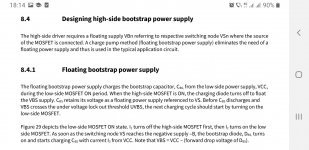 Screenshot_20220824-181402_Word.jpg181.5 KB · Views: 95
Screenshot_20220824-181402_Word.jpg181.5 KB · Views: 95 -
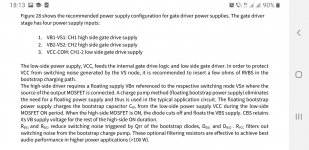 Screenshot_20220824-181307_Word.jpg196.8 KB · Views: 96
Screenshot_20220824-181307_Word.jpg196.8 KB · Views: 96 -
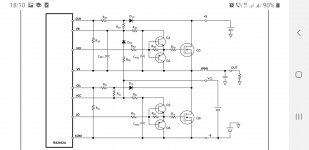 Screenshot_20220824-181050_Word.jpg70.6 KB · Views: 96
Screenshot_20220824-181050_Word.jpg70.6 KB · Views: 96 -
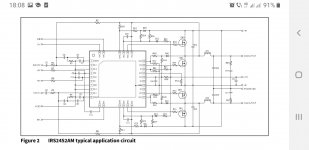 Screenshot_20220824-180839_Word.jpg106.4 KB · Views: 94
Screenshot_20220824-180839_Word.jpg106.4 KB · Views: 94 -
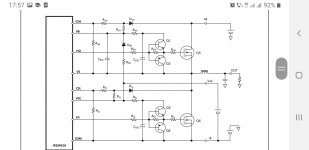 Screenshot_20220824-175742_Word.jpg73.7 KB · Views: 90
Screenshot_20220824-175742_Word.jpg73.7 KB · Views: 90 -
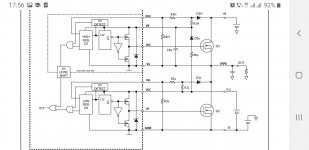 Screenshot_20220824-175644_Word.jpg95.2 KB · Views: 102
Screenshot_20220824-175644_Word.jpg95.2 KB · Views: 102 -
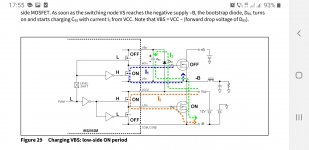 Screenshot_20220824-175507_Word.jpg111.7 KB · Views: 102
Screenshot_20220824-175507_Word.jpg111.7 KB · Views: 102 -
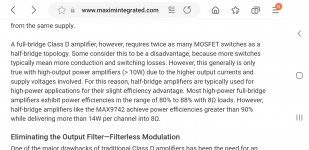 Screenshot_20220824-174803_Samsung Internet.jpg185.7 KB · Views: 91
Screenshot_20220824-174803_Samsung Internet.jpg185.7 KB · Views: 91 -
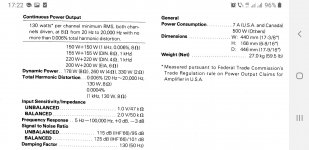 Screenshot_20220824-172256_Word.jpg165.7 KB · Views: 89
Screenshot_20220824-172256_Word.jpg165.7 KB · Views: 89 -
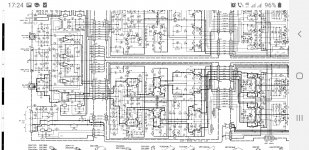 Screenshot_20220824-172421_Word.jpg355.9 KB · Views: 100
Screenshot_20220824-172421_Word.jpg355.9 KB · Views: 100 -
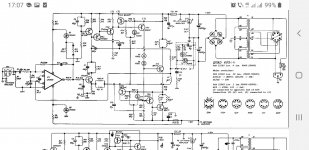 Screenshot_20220824-170735_Word.jpg202.5 KB · Views: 104
Screenshot_20220824-170735_Word.jpg202.5 KB · Views: 104
Last edited:
Some have always something universal to say about everything and they know it for sure.It feels like debating ferociously with Stephen Hawking spirit about the parallel universes...That’s just not correct that there are NO commercial high end BTL amps out there.
You mean quad405.Have you heard of virtual ground? All single rail amplifiers use it to center the output between plus and ground creating an artificial ground and they do it for decades...they might choose to create also a power artificial ground like quad 405.Have you ever heard of it?
Didn't say anything on QSC cause they're not exactly home amplifiers and I don't know anyone using them at home, but older class AB versions were virtual ground designs too.
BTL is not economical in class a, b, ab discrete technology, but it's found in many symmetrical supply amplifiers of the past as an option for higher output.
There's some theoretical background for higher efficiency in higher power class d amplifiers when supplied by dual rails, but
before diving into channel length modulation in mosfets supplied at larger voltages , it seems to me that you, as a seller don't really know your products cause looking into some IRS chip datasheet I see that the driver chip operates as single supply with bootstrapped outputs using a level shifter internally.
Now bootsrapped outputs are 60's class b/ab main way to reduce distortions in the output stage as much as it is today in class d amplifiers to avoid floating supplies...
Now honestly...I never dived into reading any of the class d IRS chips datasheet until today while you're selling them for years.
It's all economics my dear same as your margines I suppose!
I made more than 1000 quad405s.
It also uses DC + - 50V DC.
Please look at the logo on the PCB. Producer: LJM
You know why I always emphasize dual power.
In fact, I do not attach much importance to this issue.
But I wonder why so many people. Always emphasize single power supply, BTL will be better. Then find out a lot of examples.
Like some people, they always tell others that a car with three wheels is better than a car with four wheels.
Then find some examples of tractors to illustrate.
I think that as a senior DIY, we should not discuss such issues. Unless there's a reason to do so.
Attachments
Do you read what other say? I posted the original quad 405 schematic in the previous post.The original quad 405 , the one for whichYou mean quad405.
I made more than 1000 quad405s.
It also uses DC + - 50V DC.
Peter Walker was awarded by the Queen is a virtual ground design with single supply. There's no improved Quad 405 with "true symmetrical supplies"...just mambo jambo.
I'm affraid I'm going to report your post for commercials cause it's very clear to me as for others what your intentions are.
- Home
- Amplifiers
- Class D
- TPA3255 - all about DIY, Discussion, Design etc
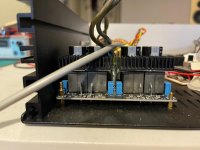
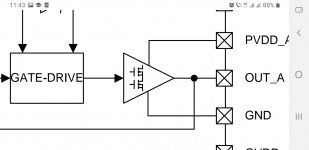
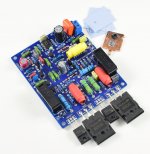
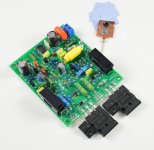
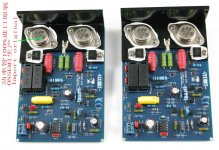

 The moderation team would like to remind you of rule #8. We do not allow commercial or product promotion in the general forums. There is a commercial section set aside specifically for his. Do NOT promote your goods or business here.
The moderation team would like to remind you of rule #8. We do not allow commercial or product promotion in the general forums. There is a commercial section set aside specifically for his. Do NOT promote your goods or business here.